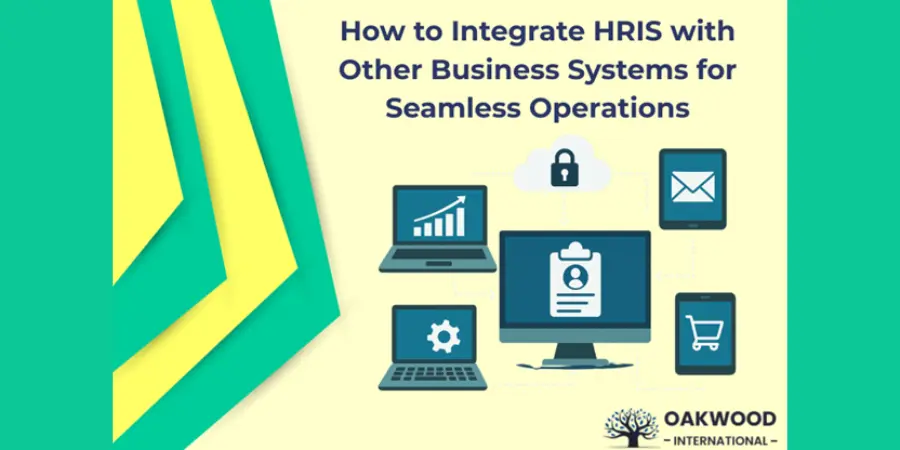HR professionals often juggle multiple systems and data streams: payroll, recruitment, employee performance, etc. Does it feel like you’re managing a maze of disconnected tools? This is where the power of a Human Resource Information System (HRIS) comes into play. But how do you ensure these systems talk to each other effectively for smoother operations?
For those diving deep into the strategic side of HR, like those pursuing a CIPD Level 7 Advanced Diploma in Strategic People Management, mastering Human Resource Information System integration is much needed. Let us explore the crucial steps for integrating your HRIS with other business systems to streamline operations and drive efficiency.
Table of Contents
- Why Integrating HRIS is Key to Success
- Challenges of HRIS Integration and Their Solutions
- Steps for Seamless HRIS Integration
- Conclusion
Why Integrating HRIS is Key to Success
Centralising employee data through an HRIS (Human Resource Information System) allows HR professionals to make more informed, fact-based decisions. However, if your HRIS operates in isolation, the full potential of your workforce management tools remains untapped. When integrated with other corporate systems, an HRIS becomes a powerful tool that enhances department communication and productivity.
For instance, linking HR with your accounting system ensures payroll aligns with the latest tax and benefit changes. By synchronising these systems, you eliminate data inconsistencies that could lead to costly errors, reducing the need for manual input. This integration allows real-time data sharing between HR, finance, and operations, fostering effective team performance.
Challenges of HRIS Integration and Their Solutions
While integrating your HRIS with other corporate systems seems like an ideal solution, it comes with challenges. One of the most common issues is data consistency. Data across different systems often does not align perfectly, leading to errors or delays when updating records. To ensure accuracy, data must be cleaned and standardised before integration.
Another challenge lies in the complexity of connecting multiple systems. Different platforms may use distinct formats or protocols, necessitating customisation and technical expertise. The integration process can become costly and time-consuming without clear communication between departments and proper preparation.
User adoption is also a key concern. Integrated systems mean HR departments must adjust to new processes. Employees who lack proper training or support may resist the change, leading to inefficiencies.
Steps for Seamless HRIS Integration
Now that we’ve addressed the challenges, let’s focus on key steps to ensure smooth integration of your HRIS with other systems. These strategies will help position your HRIS as the central hub for your organisation’s data:
- Define Your Integration Objectives
Before diving into the technicalities, it’s essential to understand your desired outcomes from HRIS integration. Are you aiming to improve payroll accuracy or perhaps integrate your HR data with performance management systems? Clearly defining your goals will guide the integration process and ensure that your company’s priorities align with what matters most.
- Choose the Right Integration Tools
Reliable integration solutions or middleware are crucial for seamlessly connecting your HRIS with other systems. These tools act as bridges, allowing data to flow smoothly between platforms. Various options are available, from custom solutions to pre-built integrations tailored to your needs. As your business grows, choose tools that are scalable and capable of supporting the systems you plan to integrate.
- Standardise and Clean Your Data
Before integrating, ensure your data is accurate, tidy, and properly formatted. Data inconsistencies, such as duplicates or outdated information, can cause problems during integration. Standardised and clean data ensures that all systems use the same information, reducing errors and discrepancies.
- Plan for Testing
Testing is often overlooked but is a crucial step in the integration process. Once the systems are connected, testing ensures everything operates as expected. Start with small data sets, check the outcomes, and gradually increase the volume to ensure the integration can handle larger loads. This testing phase lets you identify and resolve issues before they impact your business operations.
- Provide Training and Support
Once your HRIS is integrated, the next step is to prepare your team to use the new systems effectively. Comprehensive training is essential for ensuring a smooth transition. Ensure your HR staff knows how to input data, understand how the integration works, and troubleshoot common issues. Ongoing support will help your team adapt to the changes and fully leverage the new system’s benefits.
Conclusion
Integrating your HRIS with other business systems is not just about improving efficiency; it’s about creating a seamless flow of data that drives smarter decisions across departments. If you want to take your HR knowledge to the next level, Oakwood International can help you deepen your understanding of HRIS integration and its strategic benefits.













